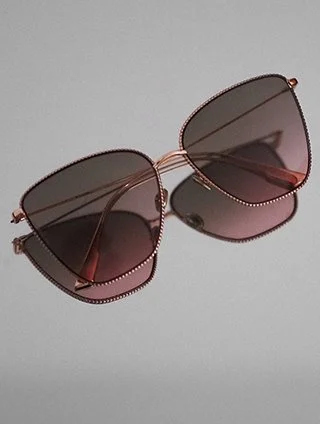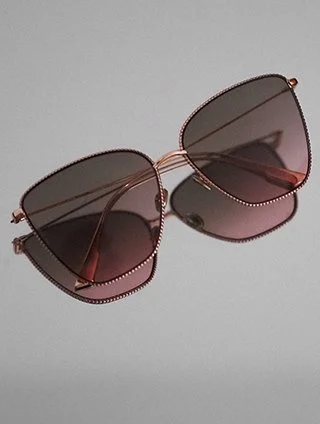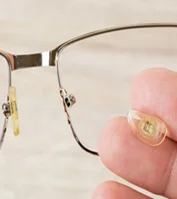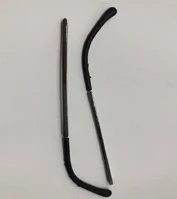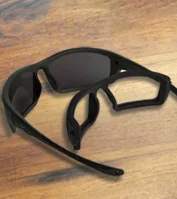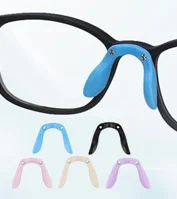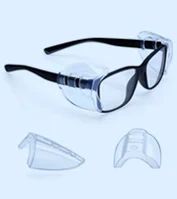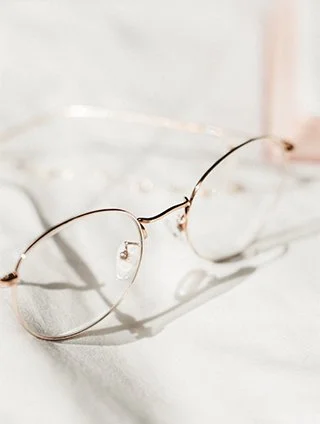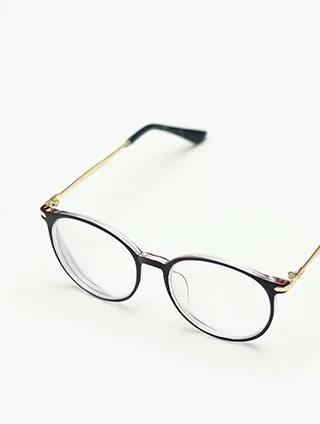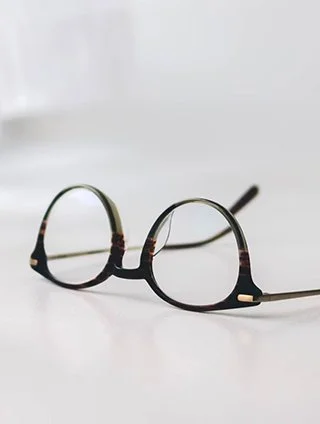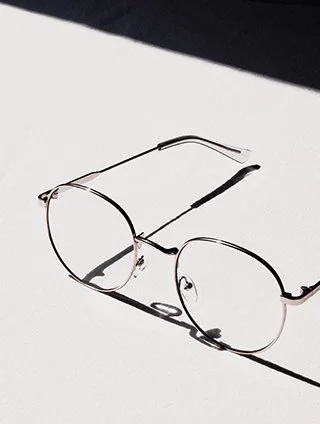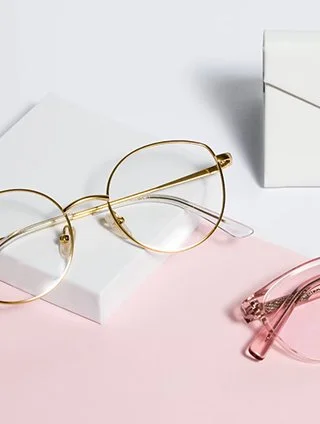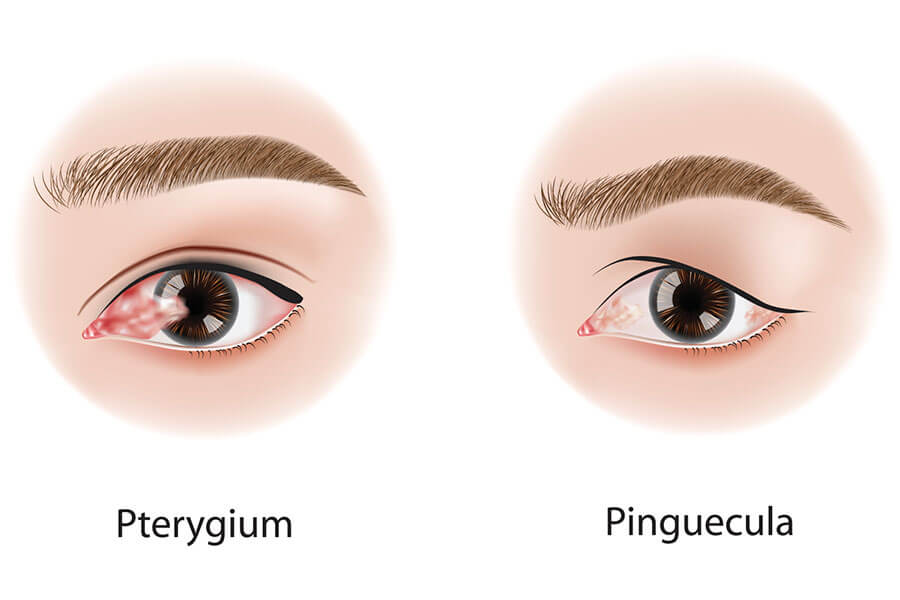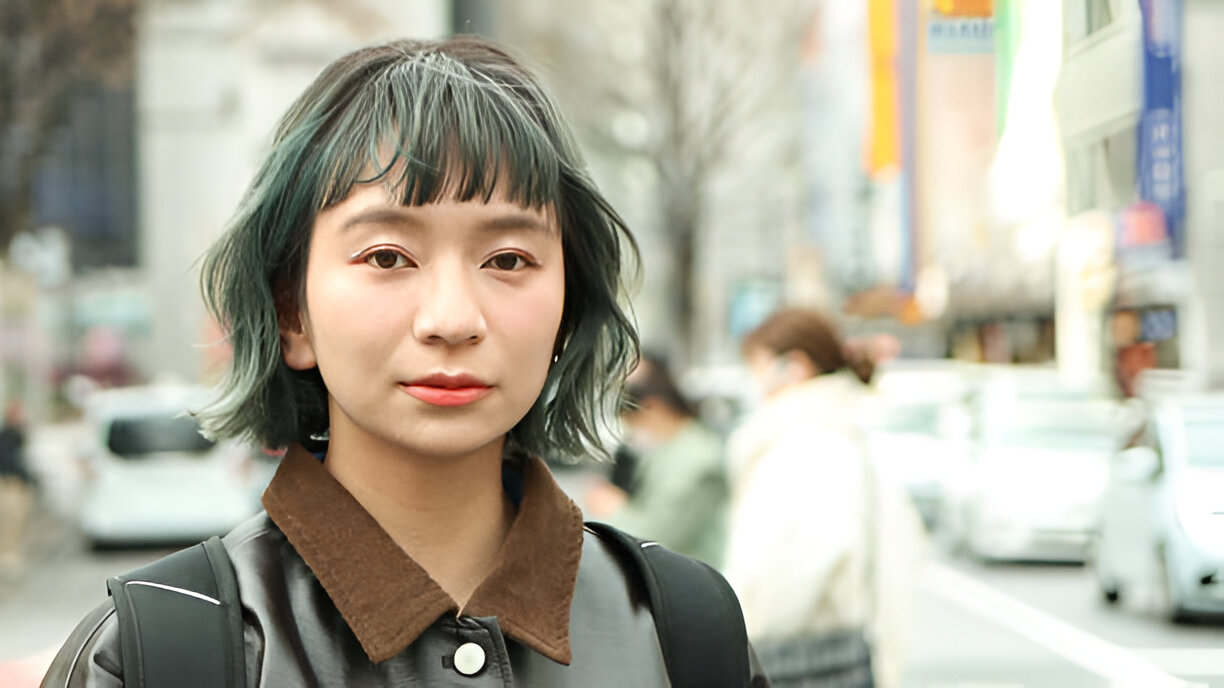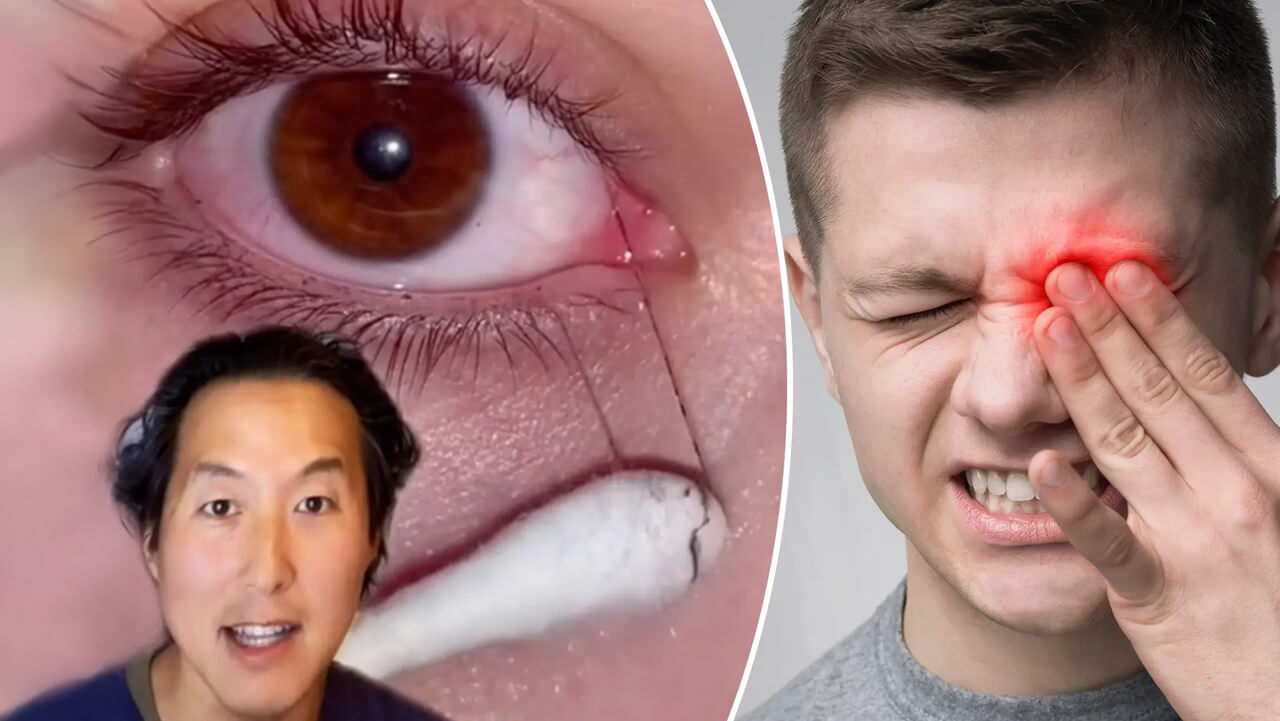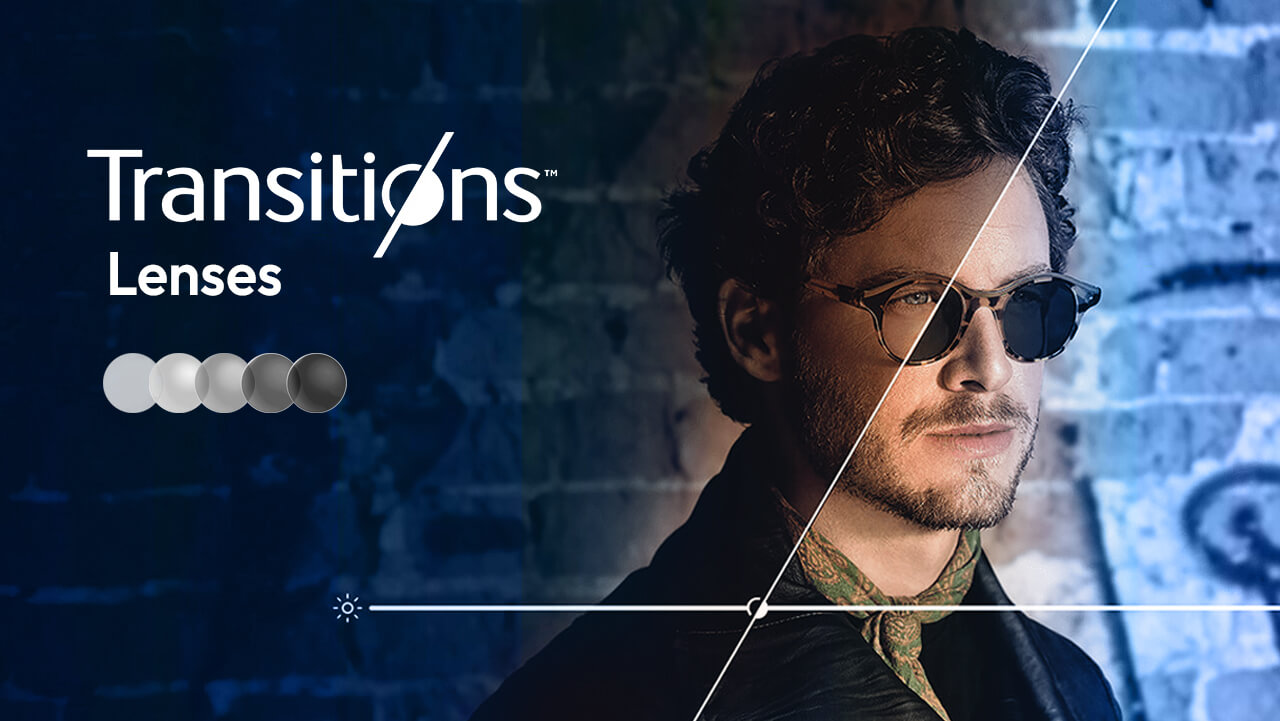Last updated: Wednesday, January 22, 2025
Extensions on the conjunctiva, the transparent layer that covers the sclera, or white portion of the eye, are pinguecula and pterygium. Here is a discussion of the treatment and preventative options for these two disorders, along with their parallels and distinctions.
Pinguecula Vs Pterygium
Both pterygium and pinguecula are aggravated by prolonged dryness or irritation and are brought on by prolonged contact with ultraviolet (UV) radiation. There are a few significant distinctions between the two.
A pinguecula is a tiny, elevated growth that can appear on the inside or outside of the eye and is restricted to the conjunctiva. It is white or yellow. Protein, fat, or calcium deposits can be found in a pinguecula. Though in severe situations it may disrupt the tear film's ability to cover the eye, producing dryness, redness, and inflammation, it usually has little effect on vision for most people.
An elevated, wedge-like shape development of the conjunctiva that spreads into the cornea, the topmost layer of the eye, is called a pterygium, or surfer's eye. These growths may also develop on the eye's outer or inner surfaces.
They may stay small in certain cases, but they may eventually enlarge to the point of discomfort or visual impairment. Pterygia typically results in eye irritation, redness, or feeling of something in the eye. When the cornea changes shape, pterygia can also lead to impaired or distorted vision.
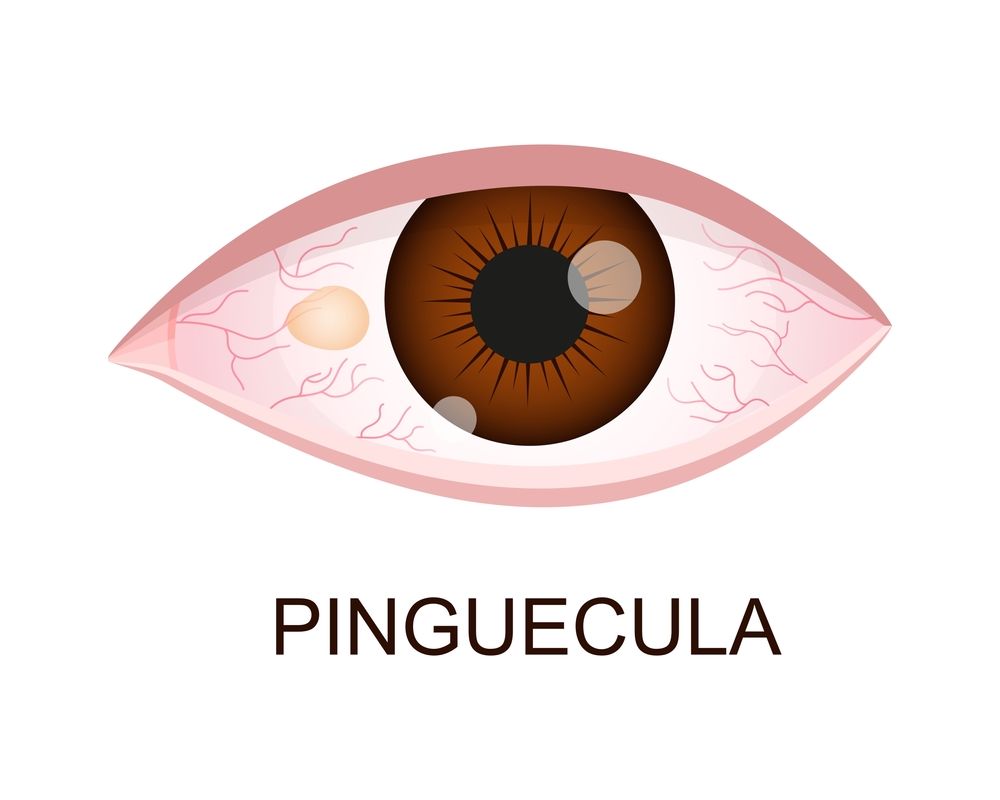
Crucial Difference Between Pterygium And Pinguecula
Pterygium and pinguecula are expansions that appear on the conjunctiva, the thin, transparent membrane that covers the white portion of the eye (sclera).
However, the two circumstances differ significantly in the following ways:
- Location: Pterygium is a soft, wing-shaped tissue that spreads from the centre of the eye towards the cornea, On the other hand, pinguecula typically develops as a raised, yellowish growth on the area of the eye closest to the nose.
- Cornea: The cornea is the transparent front surface of the eye; pinguecula does not affect it. On the other hand, pterygium can grow across the cornea and may impair eyesight if it covers a large area of the cornea or changes its form.
- Look: Pterygium is a soft wing-shaped growth that may have visible blood vessels within the tissue whereas pinguecula is a yellowish slightly elevated bump.
- Impact on vision: Because pinguecula does not affect the cornea it usually does not result in visual issues.
However, if pterygium becomes large enough to cover the cornea it can impair vision or distort the cornea's shape leading to astigmatism because pterygium can affect the cornea and vision it is generally regarded as more serious than pinguecula. While treatment for pinguecula typically consists of conservative measures to reduce symptoms pterygium may necessitate surgical intervention if it impairs vision or causes severe discomfort. However, to receive an accurate assessment diagnosis and treatment plan customised to your unique requirements and situation you must speak with an eye care specialist.
Essentials of Pterygium and Pinguecula
A pinguecula is typically located on the side of the eye nearest the nose appearing as a yellowish bump in the eye. In rare cases, persistent ocular irritation can lead to the development of pinguecula. A pinguecula has the potential to develop into a pterygium which grows onto the cornea and obstructs vision.
Pterygium goes by the names Farmers Eye and Surfers Eye. This is because individuals who spend a lot of time in the sun or dry dusty environments run the risk of developing this growth. If a pterygium is obstructing vision or irritating the eyes it may be surgically removed.
Having pterygium surgery may increase your risk of astigmatism a refractive error that causes distorted or blurry vision. Pterygium removal does not always prevent its regrowth. Recurrence rates range from 30 to 40% with those under 40 having a higher chance of experiencing it.
What Is Pinguecula Vs Pterygium Causes?
Environmental variables and genetic predisposition are considered to work together to cause both pterygium and pinguecula. Even though the precise cause of these conditions is unknown several factors are known to play a role in their development:
- UV radiation: Extended exposure to the UV radiation of the sun is thought to be a major risk factor for pinguecula and pterygium. These conditions may develop as a result of damage to the conjunctival tissue from UV radiation.
- Dry and dusty environments: Being in dry dusty or sandy environments can irritate the eyes which may lead to the growth of pinguecula and pterygium.
- Wind exposure: Prolonged exposure to the wind can dry out and irritate the eyes increasing the chance of pinguecula and pterygium.
- Aging: As conjunctival tissue ages and experiences degenerative changes elderly people are more likely to develop pinguecula.
- Genetic predisposition: Although more investigation is required to identify the precise genetic factors involved some people may be predisposed genetically to developing pterygium or pinguecula.
It is crucial to shield your eyes from strong sunlight dust and wind if you want to reduce your chance of getting pterygium or pinguecula. Using a wide-brimmed hat to protect your eyes from the sun wearing sunglasses with UV protection and avoiding direct exposure to windy or dusty conditions are some ways to achieve this. The hydration and general health of your eyes can also be preserved by using artificial tears or lubricating eye drops.
Pinguecula And Pterygium Symptoms
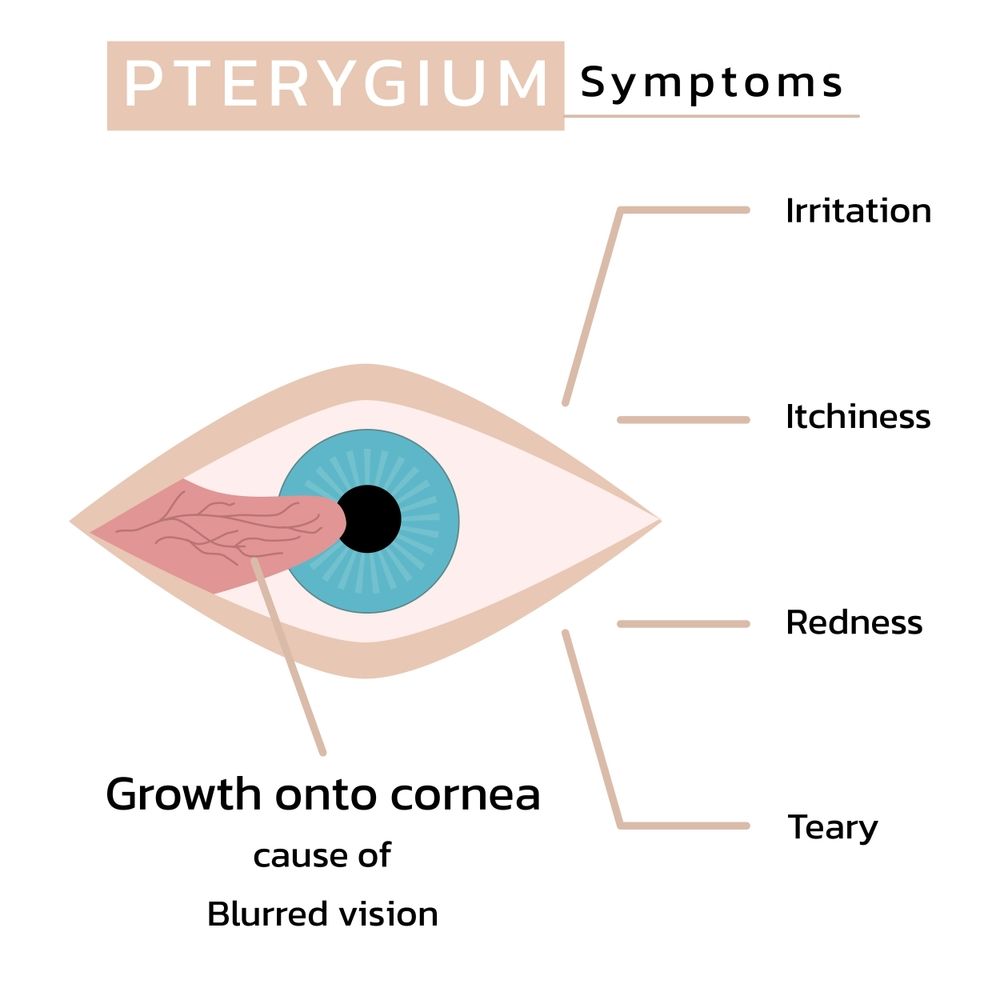
Your eye doctor can identify pterygium and pinguecula via a slit-lamp examination. Occasionally a precancerous growth may resemble a pinguecula or pterygium necessitating its removal and subsequent microscopic examination for a diagnosis.
Avoidance of Pterygium and Pinguecula
- Protecting your eyes from UV rays will help to shield the tissues inside your eyes that may be susceptible to UV light as well as the surface of your eyes. Sunglasses designed to block UV rays will help prevent exposure during the day.
- Use lubrication to protect your eyes from wind dust and other environmental particles while preserving moisture. Artificial tears have certain advantages. Choose preservative-free formulations of artificial tears that are kinder to the eye's outer layers if you use them more frequently than four times per day.
Pinguecula Vs Pterygium Treatment
If the eye is mildly irritated artificial tears are a common treatment for pinguecula and pterygium in their early stages. If the growth: your doctor might advise removing the pinguecula or pterygium.
- Thicken and hurt more.
- Modifies the eye's blinking pattern.
- The corneal curvature is modified.
If the growth is a more serious lesion, your eye doctor may advise you to remove it surgically or encourage you to use prescription eyedrops.
How To Stay Away From Pterygium And Pinguecula?
Steer clear of the things that lead to pinguecula or pterygium growths if you have experienced one of these growths previously. Here are a few methods:
- Put on sunglasses to shield your eyes from ultraviolet (UV) radiation.
- Put on goggles or glasses to shield your eyes from dust.
- Artificial tears should be used if your eyes are dry.
Pterygium and pinguecula symptoms can vary in intensity from mild to severe. They consist of conspicuous swelling and redness primarily during the growth of the pterygium. The white of your eye has a yellow patch or lump.
Eyes that are burning itchy and dry. Or having the sensation that something like grit or sand is lodged in your eye.
Treatment For Pinguecula
Pterygium and pinguecula frequently do not require medical attention. On the other hand, you might require medical attention if your eyes hurt or if your vision is impaired. You can reduce pinguecula irritation by using lubricating eye drops. They also aid in removing the bothersome sensation that something is in your eye. Your doctor might recommend steroid eye drops if pinguecula is causing redness and swelling in your eyes. Surgery is typically not advised or necessary for pinguecula and eye drops can usually relieve any discomfort.
Treatment For Pterygium
Your ophthalmologist can use lubricating or steroid eye drops to relieve the pain redness or swelling caused by a pterygium. If your pterygium grows to a size where it is causing problems, your ophthalmologist may recommend surgery to remove it. Your surgeon may apply a tiny bit of normal tissue to the afflicted area after removing the pterygium. The likelihood that your pterygium will regrow is decreased with the use of this method. It's important to shield your eyes from dust sun and dryness.
Surgery For Pterygiums
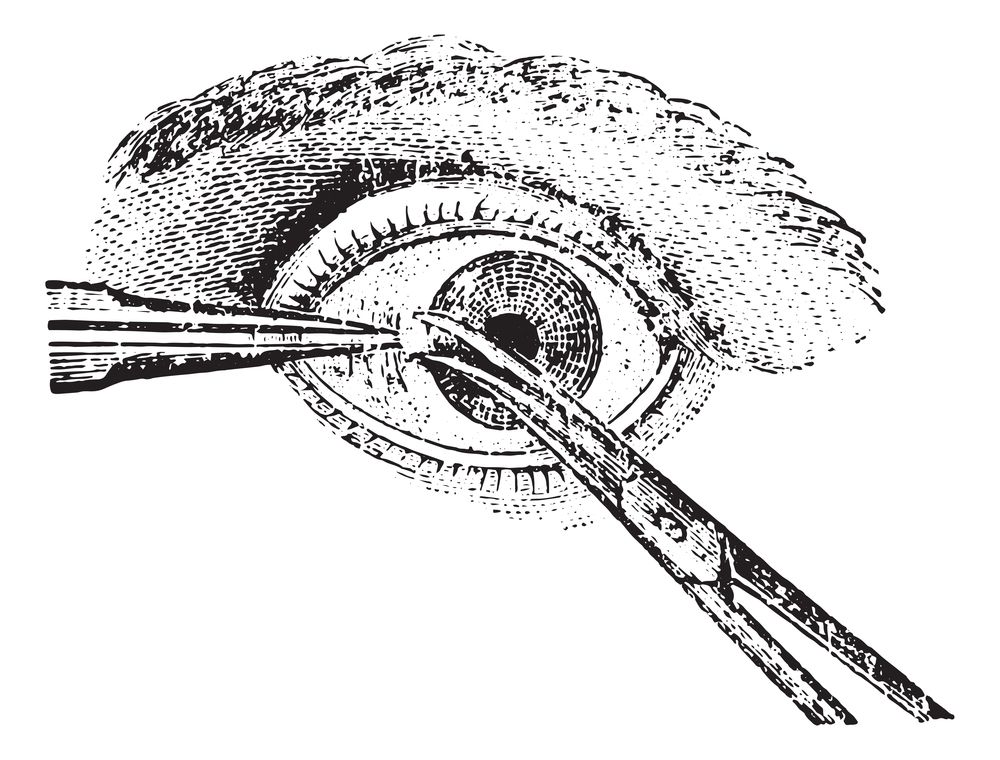
The process of pterygium surgery involves extracting the growth from the eye in an operating room. Your doctor may transfer some conjunctiva from healthy areas of your eye to cover the affected area depending on the extent of the damage and the condition of the tissues surrounding the affected area of your eye. A supportive tissue known as an amniotic membrane may be applied to encourage healing of the area if the growth is large. The process typically takes one hour to three-quarters of an hour. When both eyes require surgery, the procedures are usually performed on different days so that you can use one eye for vision while the other eye heals.
Recovery From Pterygium Surgery
To reduce any remaining bleeding and prevent infection, your doctor might put a patch on the repaired eye. Information about when you can uninstall the patch will be sent to you. Some degree of eye redness irritation or blurred vision is to be expected during the healing process. During the minimum of one month of recovery, you will probably be prescribed steroid drops and antibiotics to prevent infection and lessen inflammation and dryness. The growth may return months or years later in a few cases. If that occurs, your surgeon might be able to perform the procedure again on you and might employ different strategies to try to stop the recurrence.
Surgery For Pinguecula

Although pinguecula surgery is rare it might be necessary if there is a suspicion that a precancerous lesion needs to be removed. Following the removal of the growth healthy conjunctiva or other eye tissue is used to replace the affected area in pinguecula surgery.
Prevention of Pterygium and Pinguecula
Your eye doctor can do a slit-lamp examination to see if you're getting pterygium and pinguecula. The correct diagnosis in certain patients requires removal of the growth and microscopic examination. It's advisable to be cautious rather than sorry as certain precancerous growths may resemble pinguecula or pterygium. The following advice can help stop them from ever developing in the first place:
- Wear sunglasses to protect your eyes from UV rays which can harm other UV-sensitive tissues and the surface of your eyes. Wearing sunglasses that are made to block UV light during the day is considered eye protection.
- Always use lubricant and moisturizer in your eyes. To prevent dust and wind from irritating your eyes, you should reduce their effects as much as possible.
- Although using artificial tears can be beneficial, you might want to think about switching to a formulation without preservatives if you use them more frequently than four times a day as they are less damaging to the cornea and the outer layers of the eye.
Bottom Line
It's always preferable to take preventative measures rather than rushing to find the right solution for your eye health. A visit with your eye doctor is the best course of action if you are unsure if you are getting a surfer's eye.
FAQ's
What is pinguecula and pterygium?
A pinguecula is a small, yellowish, raised growth on the white part of the eye (sclera), often near the cornea. It's typically caused by exposure to sun, wind, and dust. A pterygium, also known as "surfer's eye," is a benign, wedge-shaped growth of fleshy tissue that starts on the sclera and can extend onto the cornea. Both conditions are non-cancerous but can cause discomfort and vision issues.
How to treat pinguecula and pterygium?
Treatment depends on the severity of symptoms. For mild irritation, lubricating eye drops can provide relief. If inflammation occurs, your doctor may prescribe steroid eye drops. In cases where the growth affects vision or causes significant discomfort, surgical removal might be necessary.
How do I get rid of pinguecula and pterygium?
While lubricating and steroid eye drops can manage symptoms, they don't eliminate the growth. Surgical removal is the definitive treatment for both pinguecula and pterygium, especially if they interfere with vision or cause persistent discomfort.
Can pinguecula lead to pterygium?
Yes, a pinguecula can develop into a pterygium over time, especially with continued exposure to environmental factors like UV light, wind, and dust. Protecting your eyes from these elements can help prevent progression.




